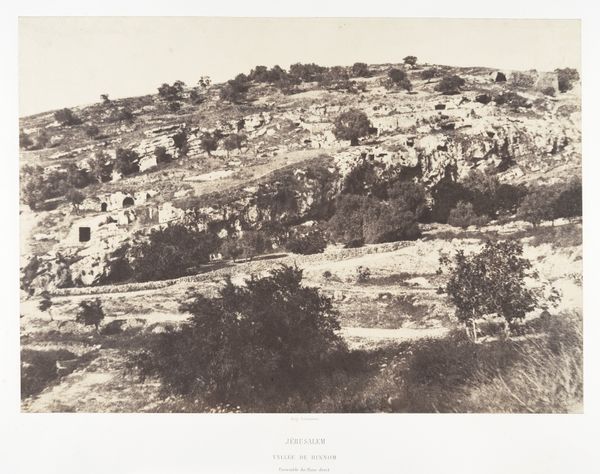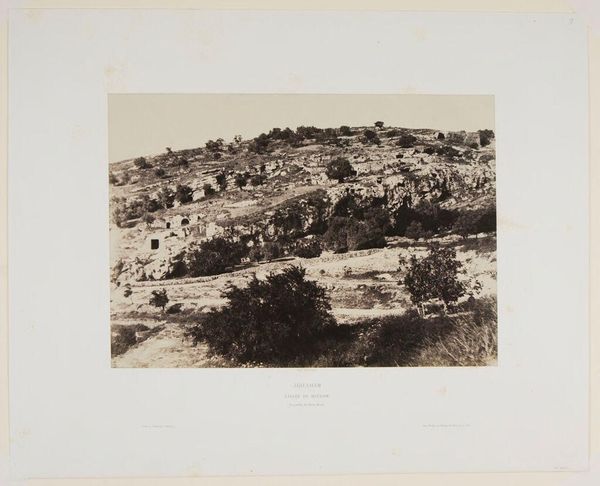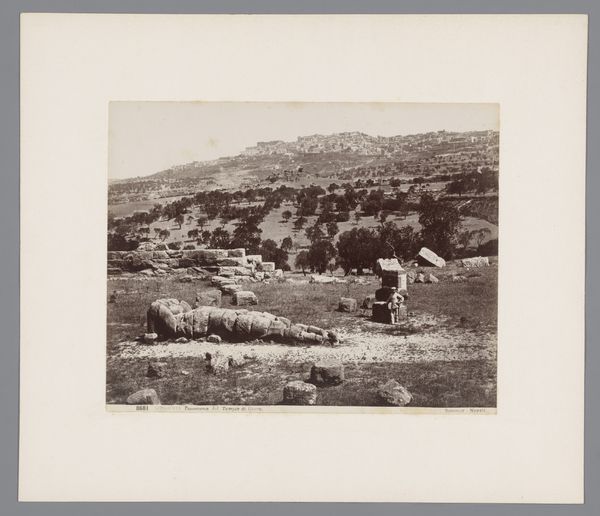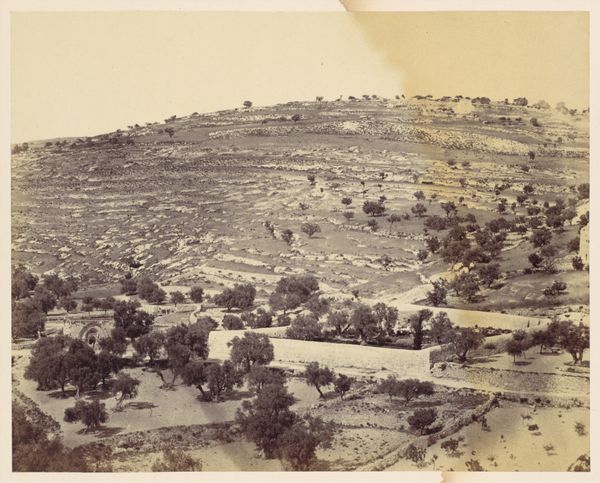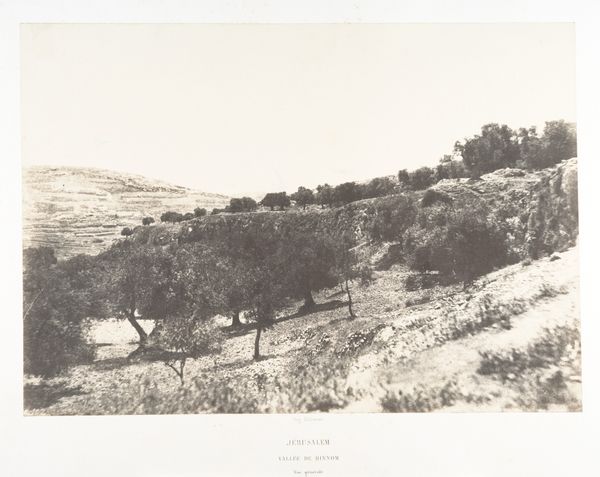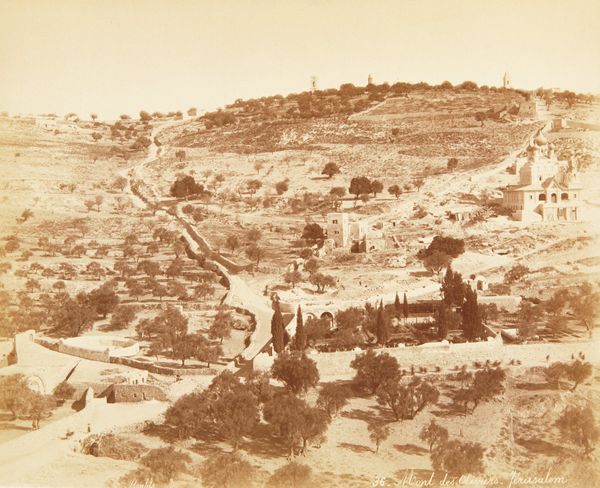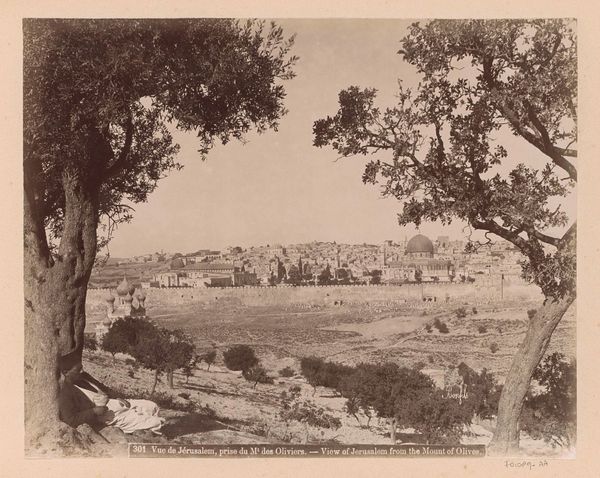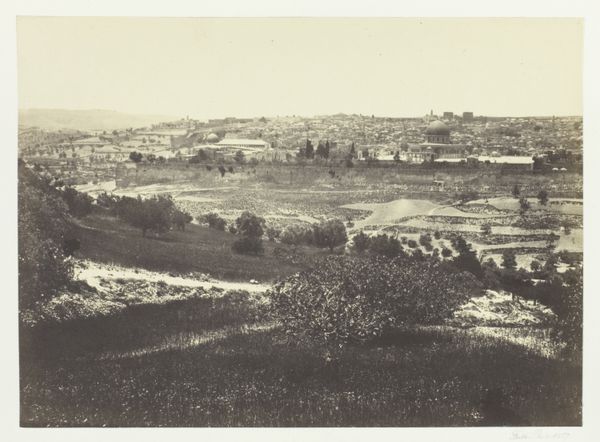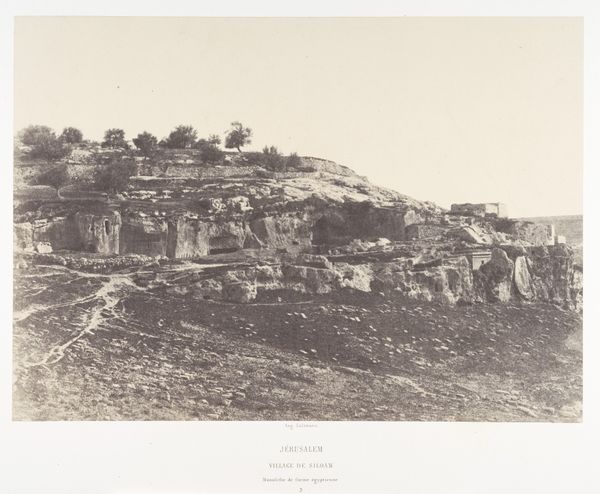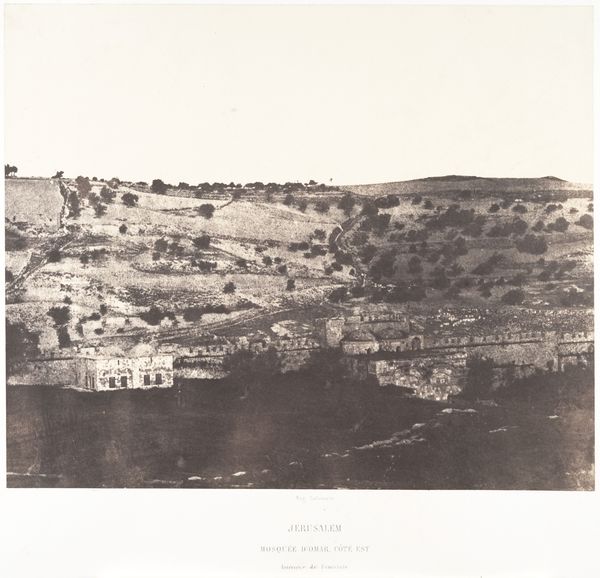
Jérusalem. (Environs) Jardin Gethsemani et Mont des Oliviers 1860
0:00
0:00
print, photography, albumen-print
#
tree
#
garden
# print
#
landscape
#
photography
#
pencil drawing
#
orientalism
#
albumen-print
Dimensions: Image: 11 in. × 8 1/2 in. (28 × 21.6 cm) Mount: 17 15/16 × 23 1/4 in. (45.5 × 59 cm)
Copyright: Public Domain
Curator: Before us we have "Jérusalem. (Environs) Jardin Gethsemani et Mont des Oliviers", an albumen print crafted around 1860 by Louis de Clercq. Editor: It's remarkable, a stark almost dreamlike scene. The tonal range in the landscape suggests an almost unbearable heat, and yet a peculiar stillness permeates the composition. Curator: Clercq, embedded within a broader 19th-century interest in documenting the Holy Land, positions his work as more than a mere record. It subtly feeds the Western imagination, reinforcing established notions of the ‘Orient,’ viewed through a specific cultural lens. The romantic notion of Jerusalem as it intersects with faith traditions, primarily Christianity, would become something of an industry. Editor: Absolutely. Even without that contextual information, I'm drawn to the strategic arrangement of trees. They function as symbols in this photograph, markers that represent something larger than their literal presence. There’s an inherent visual echo of the biblical stories of faith, sacrifice, and redemption— the olive trees acting as a silent chorus of historical and spiritual weight. Curator: The technique employed only emphasizes the social distance involved in its creation and the dissemination of this image in Europe. While meant to faithfully depict Jerusalem, its mediation through photography—a new medium at the time—and its subsequent consumption highlight its manufactured nature. Photography’s supposedly objective truth, juxtaposed against the Western fantasies of the Orient. Editor: I agree. The stark quality amplifies this distance; a visual removal allowing the audience to create their own narratives about this distant locale. One thing that resonates across culture, however, is nature itself. Curator: Very true. Considering this image's presence within museum collections today, one can contemplate its layered journey through the history of photographic arts and colonial perspectives. Editor: Looking closely, it seems that Clercq’s print embodies how places accrue layers of meaning, whether historical, symbolic, or artistic. It remains a testament to enduring fascination, visually and conceptually.
Comments
No comments
Be the first to comment and join the conversation on the ultimate creative platform.

